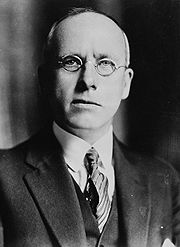New directions
| New Zealand's Search for Security | ||
|---|---|---|
| New directions | Involvement in the United Nations | Involvement with the Commonwealth | The ANZUS treaty | The SEATO treaty | ANZAM | United Nations | |
Contents
(a) What new directions did New Zealand foreign policy take after World War II?
Involvement in the United Nations
Prime Minister Peter Fraser guided New Zealand's foreign policy in the post-war period, and he played a large role in the creation of the United Nations Organisation also. The UN was founded in 1945 after World War II to replace the League of Nations, to stop wars between countries, and to provide a platform for dialogue.The New Zealand government had always been pro-League of Nations, but with the emergence of the United Nations as a pan-global organisation dedicated to security and peace, NZ stepped up its support. PM Peter Fraser was very vocal during the 1945 San Francisco conference that established the UN (or the UNO as it was known then) and came to be seen as something of a spokesman for the smaller nations of the world. Fraser also opposed the veto right of permanent members of the security council. This increased support for an international organisation was driven by a number of factors:
- the demise of Great Britain as a world power
- the passing of the Statute of Westminster
- the fear that Japan (and other countries) might represent a threat to the nations of the pacific, and
- the building of tension that eventually became the cold war
Fraser was critical of the draft plan for the UN, say it asked the great powers to make 'no pledges, no guarantees and no undertakings.'[1]
"In 1945, representatives of 50 countries met in San Francisco at the United Nations Conference on International Organization to draw up the United Nations Charter. Those delegates deliberated on the basis of proposals worked out by the representatives of China, the Soviet Union, the United Kingdom and the United States at Dumbarton Oaks, United States in August-October 1944. The Charter was signed on 26 June 1945 by the representatives of the 50 countries. Poland, which was not represented at the Conference, signed it later and became one of the original 51 Member States.
The United Nations officially came into existence on 24 October 1945, when the Charter had been ratified by China, France, the Soviet Union, the United Kingdom, the United States and by a majority of other signatories." [2]
Involvement with the Commonwealth
The ANZUS treaty
ANZUS was a collective military security treaty signed by Australia, New Zealand and the United States. It was negotiated in 1951, formally accepted by all three countries in 1952 and marked the beginning of New Zealand's movement away from 'mother Britain' towards the emerging super-power, the United States. Terms and obligations. The treaty states: "Each party recognises that an armed attack in the Pacific area on any of the parties would be dangerous to its own peace and safety and declares that it would act to meet the common danger in accordance with its constitutional processes." Issues with the treaty:
- An 'attack' as defined by the treaty was any attack on the countries themselves, islands they administered, armed forces, ships or aircraft.
- The response required by other countries in the event of an attack was not so clear cut. Military support was not compulsory, and each country need to respond in a way that was consistent with their respective constitutions.
- Made due to Australia and NZ fear over a Japan
- the ANZAC wanted harsh treaty with Japan so they would not be able to invade or attack again
- US didn't agree
- Eventually it was agreed:
- to maintain and develop resources to resist armed attack
- to consult if territorial integrity of any partner threatened in the Pacific
- act according to members constitutional processes
- Represented a shift away from Britain for defence
- US saw the treaty as anti communist and promoted the treaty to counter the domino theory
The SEATO treaty
Involved Australia, New Zealand, United States, France, Pakistan, Philippines, Thailand. South Vietnam, Laos, Cambodia and was signed in 1954 as a result of the Manila Treaty. It was designed to strengthen nations so they to resist an insurgency but also to:
- preventing the spread of communism
- promoting social and economic programmes
- to consult if territorial integrity of any partner threatened in the Pacific
- act according to members' constitutional processes
ANZAM
- Australia, Malaysia and New Zealand
- 1955
- Defence agreement not a treaty
- To provide troops to stop a communist overthrow in Malaya as it was a state of emergency
- Called Commonwealth Strategic Reverse
- New Zealand involved for:
- Belief in collective security
- Strengthen defence links with Australia and Great Britain
- Troops later used to protect Malaysia from the threat of Indonesia
United Nations
- Peter Fraser played significant role in the creation of UN
- NZ supported UN forces in South Korea in Korean War
- Showed NZ was prepared to support UN
- Believed in the idea of collective security
- unable to support ourselves without the support of others
- collective security the best weapon against others' aggression
|
Define the following, as fully as you can. Give details about which countries were involved, the date they were signed and why they were significant.
|
- ↑ p.57 Mackinnon, Independence and Foreign Policy
- ↑ http://www.un.org/aboutun/history.htm
